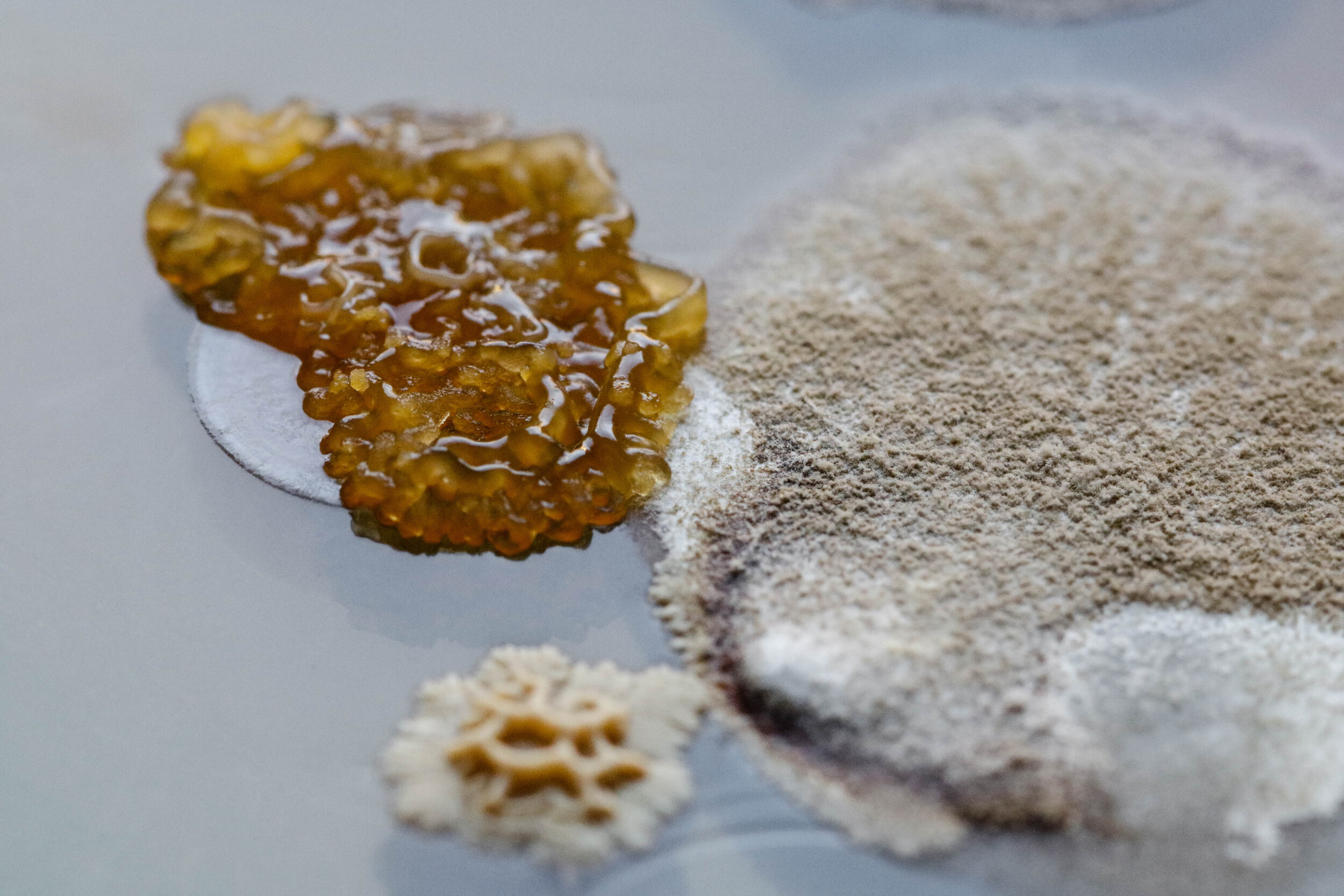
Silent Companions
BACHELOR PROJECT
Munich University Of Applied Sciences
Tutor : Prof. Xuyen Dam
2019
Microbial photography and reproduction images © Rachel Hoffmann
Silent Companions is a documentary book about the unconscious beauty of microbiology.
The chosen topic focuses on the beauty of microbiology and addresses the negative connotation we have developed towards bacteria. Bacteria have important functions even though their perception and presence is often rejected in most social areas. The work consists in creating a new awareness and perception of the theme through the visual presentation of microorganisms and in establishing a different relationship between art and science.
By taking samples from places known to the reader, the documentation tries to strengthen the reader‘s sense of identification and to overcome his or her disinterest in microorganisms. Through interactive manipulations created through the layout and design of the book, the reader is led to discover the aesthetic beauty of microorganisms in a tactile and subconscious way. The photographs are marked with letters to anonymize the space where they have been collected and to reinforce the possibility of interpretation. The photographic documentation of the thematically arranged samples supports the diversity and aesthetics of the organisms. The samples derive from four domains that progressively unfold into the reader‘s private space: public, private, food and human. The categorization demonstrates the intertwining of boundaries between microorganisms in the public and private space. The added value that results from reading the book consists in the clarification of the field of microbiology, in order to open up new possibilities for the reader to appropriate the subject from a purely visual and aesthetic point of view. The visual domain is expanded by the presentation and layout of the photographs, while the invisible domain is being diminished.
The project aims to increase knowledge, awareness and understanding of the importance of the field of microbiology. Ideally, the reader can transfer his or her findings to other spheres of life. In this context, not only can the phenomenon of the perception of complex structures be understood, but also interpreted in a new way. The documentation highlights in a playful and philosophical form, how we can have prejudices about areas that seem less known to us, and offers a possibility to overcome them through clarification. Accordingly, the work results in a method of elucidation that puts the field of microbiology in a new light. Silent companions corresponds less to a reproduction of reality than that of a new understanding.


















